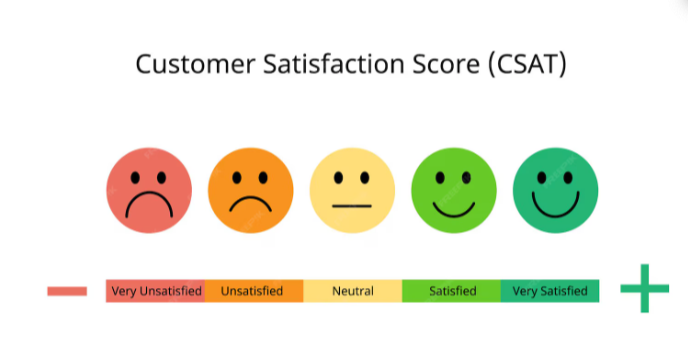AI for Customer Service and Operations - The Do's and Don'ts
ServiceNow’s AI-driven technology redefines what's possible, from streamlining customer interactions to boosting agent productivity. Discover insider...
Wojciech Szczyrba • 3 min read • Jul 3, 2025

Every business wants happy customers, but how do you actually check if your customers are happy? That is where Customer Satisfaction Score, or CSAT, appears.
CSAT is a powerful tool based on metrics that gives companies a clear picture of how satisfied their customers are with a product, service, or experience. For service-focused teams, using platforms like ServiceNow, CSAT is a vital part of measuring success and improving service delivery, unlike other tools.
In this post, we will define Customer Satisfaction Score, explain why it matters, and show how it is implemented in ServiceNow to support smarter decisions and stronger customer relationships.
Measuring CSAT ensures service teams stay aligned with real customer expectations, allowing them to act based on experience rather than assumptions.
Customer Satisfaction Score (CSAT) is a Key Performance Indicator (known as KPI) used to measure customer satisfaction with a specific interaction, service, or product. Usually gathered through short surveys, CSAT scores are based on customer ratings, often on a scale from 1 to 5, and converted into a percentage that shows overall satisfaction and feelings about a Product or a Service.

Beyond the basic score, CSAT is about understanding what is behind customer sentiment and using that insight to improve future experiences.
Customer Satisfaction Score helps to capture a snapshot of customer sentiment at critical areas, delivering actionable data for ongoing improvement.
Customer Satisfaction is more than just a number - it is a direct view into how well your business is meeting customer expectations. Regardless of your business type (for example, IT, finance, or any other service-driven industry), CSAT provides key business outcomes:
Happy customers are coming back. The customers are likely to repeat purchases with companies that offer excellent customer service. A high CSAT score shows you are on the right track to achieve this.
Customer retention rates increase when satisfaction levels remain high, reducing churn and increasing lifetime value.
Low CSAT scores act as red flags. They highlight problem areas in your process or service delivery, giving you a chance to take action before a minor issue becomes a major problem.
This visibility allows companies to continuously optimize operations based on real customer experiences.
Satisfied customers spend more on the service. Companies that prioritize customer satisfaction can require higher prices and enjoy reduced acquisition costs.
Improving CSAT is about consistency and care. Here are a few reminders:
ServiceNow uses CSAT collection and analysis, making it easier for teams to respond to customer feedback in real-time events.

By integrating CSAT into the service workflow, ServiceNow empowers teams to build a culture centered on customer satisfaction.
Customer Satisfaction Score cannot be treated as checking a box, it’s about understanding the customer's needs, listening, and improving the offered service. With tools like ServiceNow, you can capture feedback where it matters most and use it to continuously elevate the customer experience.
CSAT helps you stay connected to what your customers think. It gives you the data to build your strategy, the insight to guide your next steps, and the opportunity to create a customer experience never forgotten.
Don't just collect feedback, use it to lead with confidence, improve continuously, and grow sustainably.
Learn how our team can help you implement CSAT in ServiceNow using dedicated tools and start building a customer-focused service strategy. Book a demo or talk to a specialist today.

ServiceNow’s AI-driven technology redefines what's possible, from streamlining customer interactions to boosting agent productivity. Discover insider...

The ‘Pitfall’ Throughout the years, we have seen multiple customers facing issues when they want to expand their Customer Service Application to new...

Finding the right talent to support your investment in ServiceNow solutions could be a struggle. Since the platform is growing faster than the number...